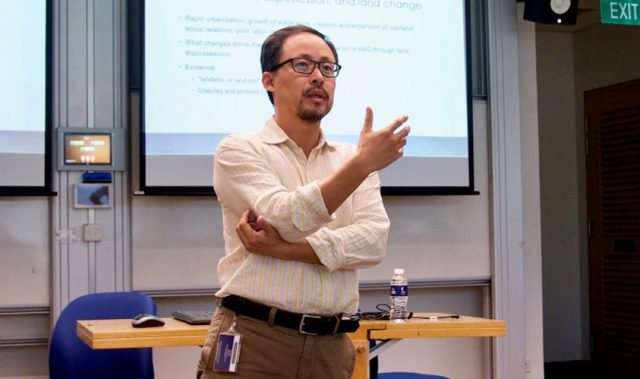
AsianScientist (May 21, 2015) – By Zaria Gorvett – Everywhere you look, all around us, people are carrying with them an astounding amount of Intellectual Property (IP). In 2012, smart phones accounted for over 250,000 active US patents. Trademarks protect brands like Apple and Samsung; patents protect innovations such as “pinch to zoom”; copyright protects software, ringtones and games; and design rights protect a phone’s shape.
The potential economic impact of this trend is immense, and it can be seen in the surge in patent filings between 2012 and 2013. In total, innovators filed 2.57 million patent applications in 2013, a 9% increase from 2012. But while patent filings increased by over 26% in China, 12% in Australia and 8.3% in Korea, European filings were in decline, according to the 2014 World Intellectual Property Indicators report that gathers data on IP rights from more than 100 countries.
Aside from a numbers game, the extent to which Asian economies can translate IP rights into innovation and economic gains may depend on how effectively businesses can master the business landscape as well as the legal framework.
Professor David Llewelyn from the Singapore Management University (SMU) School of Law explains, “IP rights are the new invisible gold for most 21st century businesses, but there are challenges—as Thomas Edison said, a patent is an invitation to a lawsuit. The problem is how to convert IP rights from being a liability into an asset. Getting IP rights is the easy part; knowing what to do with them to create value is the hard part.”
A new centre for IP research
To help businesses in Asia convert IP rights into assets, the SMU School of Law will soon launch the Applied Research Centre for Intellectual Assets and the Law in Asia, in May 2015.
“The Centre will focus on the interaction between IP law and business to facilitate appreciation of Asian intellectual assets and understanding of IP law in Asian economies, and the push for IP law cooperation in ASEAN,” explains the Centre’s director, Professor Liu Kung Chung.
Applied research at the Centre will support what some speak of as an “innovation renaissance” in Asia. Amongst its initial efforts will be a collection of 24 case studies on patent law to be translated, summarised and commented on by eminent IP scholars based in Asia.
“We will select cases that stand out for their Asian characteristics,” says Professor Liu. “The collection will cover subjects such as compulsory licensing, specialised patent courts, the intersection between patent law and competition law, and cross-border patent mediation, arbitration and litigation in Asia.”
Professor Liu hopes that the case studies and other projects in the Centre will help Asian economies and businesses learn from each other’s successes and failures.
China – opportunities and hurdles
Historically, profiting from IP in major Asian economies was difficult due to a lack of serious enforcement, underscoring the need for a better understanding and enforcement of each country’s unique IP rights, says Professor Liu. But there has been progress, especially in the most enticing and yet most complex of Asian intellectual property markets: China.
“China is the new frontier for many businesses: developing a strategy to protect your trade secrets, your patents, your brands there is critical. Forward planning is essential: don’t be like Starbucks who found that a local business had taken its trademark because it didn’t register it early,” Professor Llewelyn adds.
Indeed, while China is rapidly emerging as a world leader in “intangible assets” with 825,136 patent filings in 2013, it is also the world’s largest source of IP theft, followed by Russia and India, according to the 2013 IP Commission Report by the National Bureau of Asian Research. This makes it critical for businesses to understand the realities of bringing IP rights to China’s market.
Understanding China’s IP market, says Professor Llewelyn, requires an understanding not only of the vagaries of its IP laws, but the efforts of its government and businesses to strengthen China’s innovation and technologies. These efforts have required foreign companies wanting to invest in China to front up with their most cutting edge technologies while simultaneously risking the exposure of their IP in these technologies, as explained in a recent article surveying China’s IP minefield by Professor Llewelyn and a colleague from the University of Cambridge Judge Business School. In the article, they set out an IP action plan for businesses looking for growth in China, advising those businesses to be pragmatic and long-term in their approach.
Professor Liu is also editing a book entitled India and China: Perspectives on Innovation and IPRs in China and India: Myths, Realities and Opportunities, which examines China together with Asia’s other rising powerhouse, India. “This book examines the specific interrelationship between IP rights (IPR) and innovation in the two most populous nations of the world. Shedding light on the relationship between IPR and innovation will be especially useful to developing countries,” he says.
IP encourages creativity and innovation
The battle over IP rights, Professor Llewelyn says, is fierce, never-ending, and impacts all aspects of daily life.
“From pharmaceuticals to smart phones, a patent war is taking place. For the creative world, from J K Rowling to Bollywood, protecting copyright is crucial. And for online businesses like Alibaba to Zuji, protecting the online brand is essential.”
And while most people hear about the negative aspects of IP rights such as counterfeiting and piracy, IP remains an essential tool for protecting and encouraging creativity and innovation, says Professor Liu.
Both Professors Llewelyn and Liu are unwavering in their belief in the positive contribution of IP rights to society. They see their work as helping people benefit from progress in the arts, science and technology, while ensuring Singapore and regional businesses receive just and reasonable rewards when they create and innovate.
Asian Scientist Magazine is a media partner of the Singapore Management University Office of Research.
——
Copyright: SMU Office of Research. Read the original article here; Photo: Shutterstock.
Disclaimer: This article does not necessarily reflect the views of AsianScientist or its staff.












